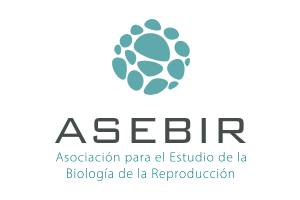Introduction: In vitro maturation (IVM) of oocytes is an underutilized paradigm in assisted reproductive technologies that can yield mature, fertilizable oocytes that can result in live births. Among the reasons for its low utilization is the disappointing number of oocytes (~6) retrieved when intending to obtain only immature oocytes for young women. Further, this yield of oocytes seems relatively unchanged by using a small number of gonadotropin doses or triggering the injection of hCG.
Objectives: We aimed to evaluate if changes in the abbreviated ovarian hyperstimulation dosing could improve the efficiency with which immature oocytes are retrieved for IVM studies.
Participants/materials and methods: Sixty-one women (28.24±3.50 years and 22.60±2.86 BMI) with AMH levels exceeding 1.0 ng/ml received injections of recombinant FSH for consecutive days.We tested three different protocols: daily injections of the same dose of FSH (200-200-200 IU, group A, n=8) followed by no trigger or a trigger of 500 mcg of recombinant hCG (group B, n=42), and the administration of one higher dose of FSH followed by two lower doses (300-150-150 IU) and hCG(group C, n=11).
The outcome parameters examined were the number of oocytes retrieved, the retrieval efficiency (the number of oocytes retrieved per antral follicle viewed with ultrasound two days before the retrieval(O/UF) and per follicle aspirated at the oocyte pick-up (O/AF), the size of antral follicles after stimulation(<= 6 mm and >6 <12 mm), and physician efficiency for oocyte collection. A correlation analysis was done between RE and the size of the follicles.
Results: With the 61 subjects tested, we obtained 7.2 ± 3.7 oocytes (mean + SD). The retrieval efficiency (RE)averaged 37.6 ± 17.6% oocytes per antral follicle (O/UF) and 47.4 ± 21.2% per aspirated follicle (O/AF). Small variations in RE were not significantly different when comparing the stimulation protocols based on three daily same-dose FSH injections with or without hCG (Group A O/UF:30.01 ± 14.9%, O/AF:37.5± 18.8%; Group B O/UF: 37.7 ± 17.6%, O/AF:48.9 ± 21.3%) and the administration of a higher dose ofFSH on the first day (Group C: O/UF:40.9 ±19.3, O/AF:49.0 ± 22.7%). The physician retrieved around78% of AFC, comparing the punctured oocytes to antral follicles.When we analyzed the size of antral follicles before retrieval, the percentage of >6mm follicles (mean ofall donors = 69.7%) was positively associated with the RE O/AF (R = 0.33; P < 0.001) and RE O/UF (R =0.25; P < 0.001). The percentage of >6mm follicles for individual groups (Group A:84.0%. Group B:67.1%, and Group C:68.6%) were not significantly different.
Conclusion: Neither dosages of gonadotropin nor a recombinant hCG trigger resulted in changes to the number of retrieved immature oocytes and efficiencies, although these were influenced by the follicle size.
Retrieval efficiencies of 37.6 % of the antral follicles and 47.4 % of the aspirated follicles are good values for immature oocyte retrievals for IVM. However, it falls short of typical IVF retrievals, needing more studies to improve these rates considering the control of follicle size and using different aspiration pressures and filters for oocyte pick-up, among others.
